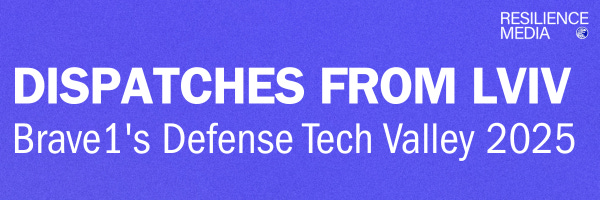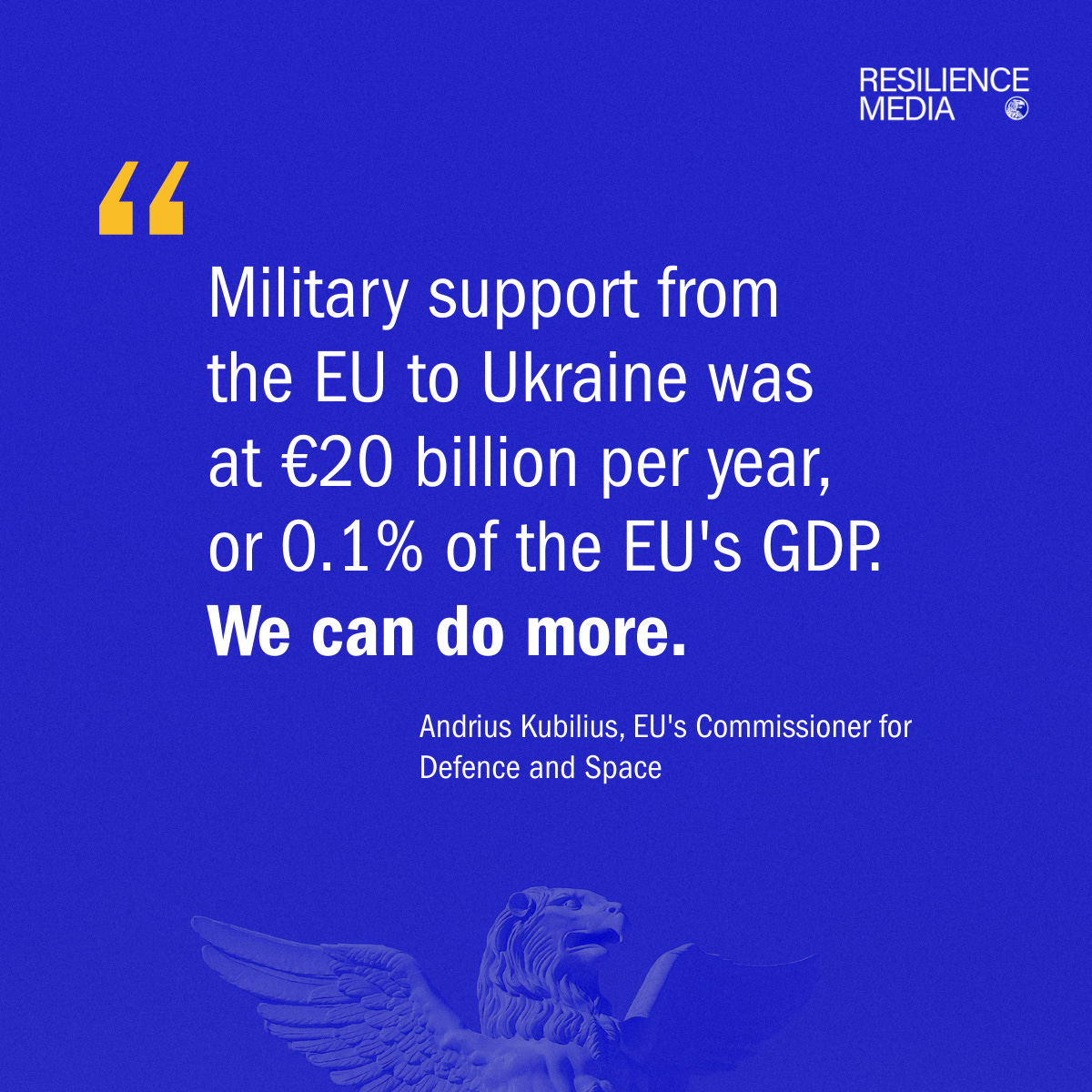Defense Tech Valley 2025: A TLK-1000 On Display, a $100M Defense Tech Moment, Foreigners Seek Learnings From the "Ukrainian Experience"
There is no time like now to be focusing on Ukraine.

There is no time like now to be focusing on Ukraine.
On one hand, it is ground zero in a geopolitical crisis that is constantly teetering on the edge of being a wider existential threat (and in the case of Poland, Romania, Estonia, and Denmark it's not teetering. It's fully tilted.) On the other hand, its position in war has, unexpectedly, also transformed it into ground zero in the realm of defence tech. And thus an industry is born. That is the message its government is very much pushing, and it was evidenced no more so than at Brave1 and the confab it hosted last week in no less than a major football stadium.
We're publishing an excerpt from our on-the-ground (or in-the-stands, as the case may be) reporting below -- the full article is a must-read. Mykhailo Federov, First Deputy Prime Minister — Minister of Digital Transformation of Ukraine, took the moment to call out some of the hard figures coming out of this hard tech moment in his country: International investors have pledged $100M to support defence innovation in Ukraine; Netherlands-based NUNC Capital has committed €25M to Ukraine’s resilience and reliance on foreign countries; and German-Luxembourg fund Verne Capital will funnel €25M into Ukrainian defence, security, and cyber companies. These are relatively speaking still small numbers. (Witness the billions raised by Anduril, Helsing and others.) But they are numbers and they speak to the growing ecosystem.
On the 19th of September, right after Brave1 conference in Lviv had finished, the President of Ukraine Volodymyr Zelensky announced that 'within two weeks' the country will present a framework for 'controlled export' of weapons. This model, he said, will allow Ukraine to sell to its partners those types of arms the production of which exceeds the domestic needs. Zelensky named unmanned surfaces vehicles as an example. The export will be allowed not only to the US and 'European partners' but also to those states which 'are also interested in Ukrainian weapons and who have supported Ukraine in certain ways'.
These very real examples, and more like the introduction of MITS Industries which we covered yesterday, is why we are so very excited to have Ukrainians on stage and in our audience at the upcoming Resilience Conference. Don’t miss hearing from, among others who we cannot announce for security reasons:
Perry Boyle, CEO, MITS Capital LLC
Eveline Buchatskiy, Managing Partner, D3
Oleksii Dorohan, CEO, Better Regulation Delivery Office (BRDO)
Alex Kinash, European Partnerships Director, Vermeer
Volodymyr Gorodnychyi, Representative of Nemesis Regiment, Unmanned Systems Forces, Armed Forces of Ukraine
Oleksandr Vorobiov, Air Defense Training Department, 3rd Army Corps, Armed Forces of Ukraine
Buy your ticket today and I’ll see you there.
-Leslie
The Ukrainian government created Brave1 in 2023 to foster a defence tech ecosystem in the wake of the Russian invasion. The idea was simple: bring together experts from startups and elsewhere to put together prototypes to use in Ukraine’s defence within weeks of conception.
But two years on, Brave1 has become something else.
“It is funny, isn’t it, that Western companies now schedule meetings with Western companies at the sidelines of a Ukrainian event?” remarked one U.S. startup employee to Resilience Media at a football stadium earlier this week.
Yes, that's right. Brave1's Defence Tech Valley conference happened at a stadium. No other location could simultaneously harbour an audience for panel discussions, racing grounds for unmanned ground vehicles, and just enough free space for a TLK-1000. Ranging 12 meters in length and capable of carrying a 5,000-kg warhead, this unmanned underwater vehicle has yet to be used in an active strike. But the startup believes this product will resonate beyond the Black Sea that borders the country. Allied countries in Asia Pacific will be a key target.
Beyond Toloka, the company behind the TLK-1000, defence technology has emerged as the backbone of Ukraine's relations with the world, a topic that loomed large over the conference. Happening in Lviv, far closer to EU's border than the usual Kyiv venues, many first-comers to Ukraine were welcomed at the event.
After the event concluded, Mykhailo Federov, Ukraine’s minister for “digital transformation” who is also the country’s First Deputy Prime Minister, spelled out the event in numbers.
There were 5,000 participants and 1,500 foreign guests from more than 50 countries, he said, with over $100 million committed during the event to defence tech startups out of the country. Those commitments were primarily made by way of foreign money: NUNC Capital out of the Netherlands said it would invest €20 million into Ukrainian startups; Germany’s Verne Capital Fund announced €25 million; Varangians Fund from Sweden said it would launch a “large-scale investment plan” and has made its first deal (unannounced); the launch of a new fund called Oedipus; and the startup Swarmer raising $15 million.
Such a massive presence of foreigners seeking learnings from the “Ukrainian experience” was not always the case.
“It is not a secret that in 2022, Western companies just dropped off their products at the Ukrainian border,” recalled Clayton Williams, the managing director of IQT International, the US American venture capital firm that has its roots affiliated with the CIA. Only a few years ago, he said, the feedback loop simply did not exist.
No wonder that some of the technology did not live up to the expectations.
“In 2022, when Shield AI first came to Ukraine, we failed,” said James Lythgoe, the company's Ukraine managing director.
Shield AI could have decided to “join the graveyard of other technologies that failed and walk away,” he added, but instead chose a different path and invested eight months of iterations until its reconnaissance UAV MQ-35 V-BAT would become fit for purpose.
Now, Lythgoe disclosed, Shield AI is working with 45 units within the Ukrainian army.
Not every company has followed this curve.




